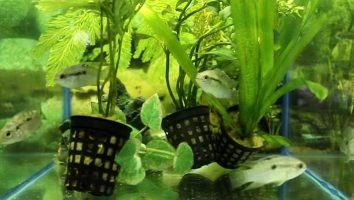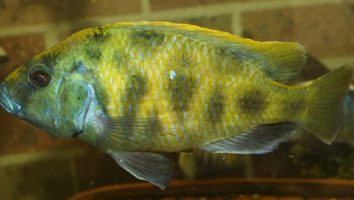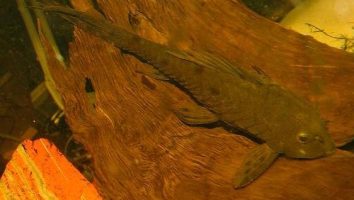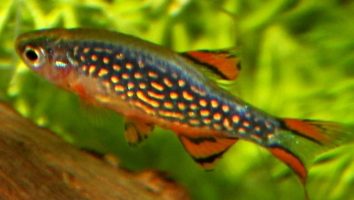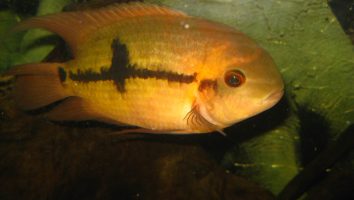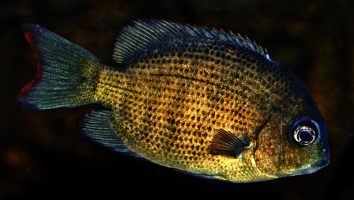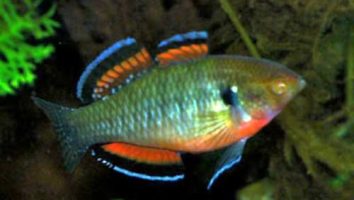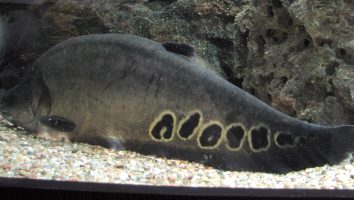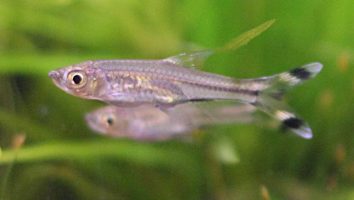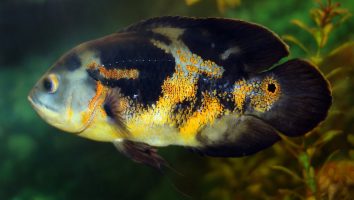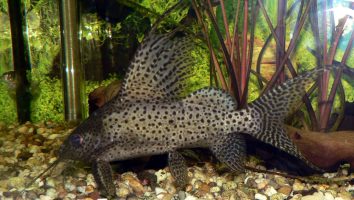The Madagascar rainbowfish is a peaceful and stunning freshwater fish that is perfect for beginner aquarists.
This guide will teach you everything you need to know about Madagascar rainbowfish care. You’ll learn about their diet, size, lifespan, and more!
Table of contents
Species overview
The Madagascar rainbowfish (scientific name: Bedotia geayi) is a freshwater fish that’s endemic to Madagascar. It’s found in various rivers throughout the island, although it seems to be most concentrated in the central and northern regions.
This fish prefers slow-moving waters with a lot of vegetation. This is something that’s common among many rainbowfish species, as they tend to do best in these types of environments.
The Madagascar rainbowfish is a peaceful fish that does well in community tanks. They are known to be compatible with a wide variety of other fish species, which makes them a popular choice for many aquarium enthusiasts.
One of the most notable things about this fish is its unique coloration. The body is a silver color with a beautiful blue sheen. This is accented by a bright red tail, which really makes this fish stand out.
Appearance
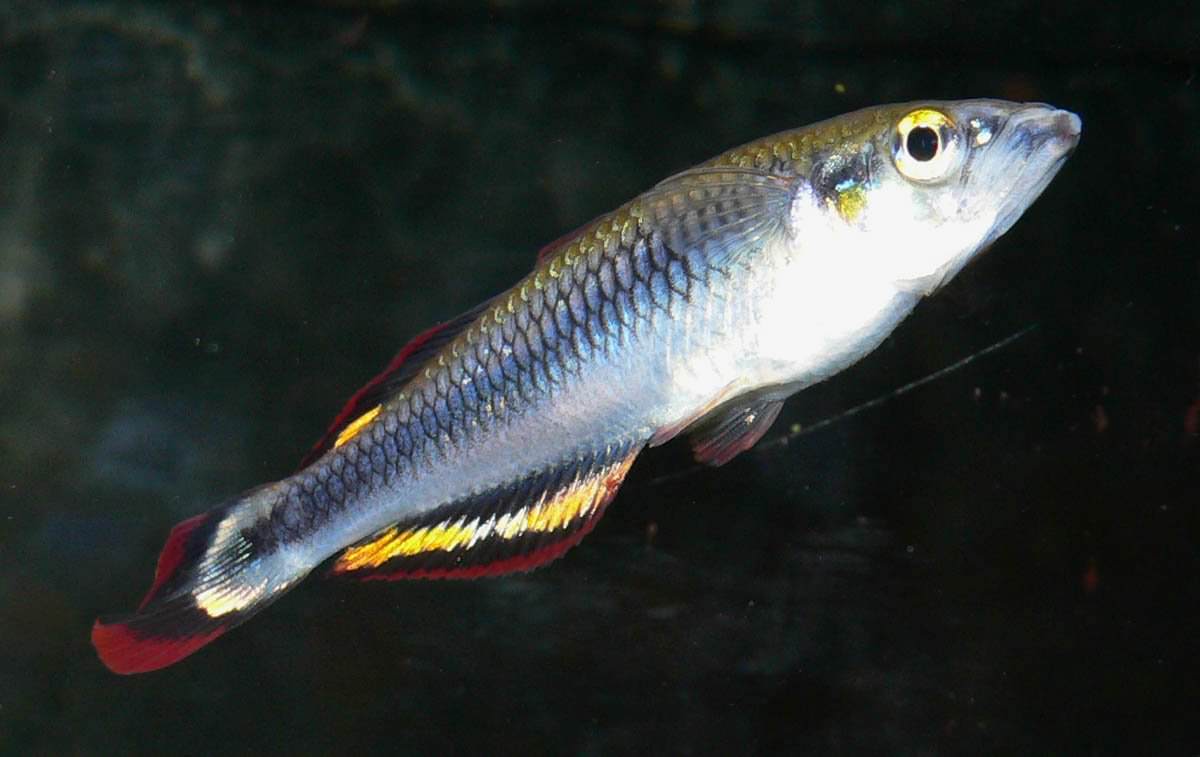
The Madagascar rainbowfish is one of the more peaceful freshwater fish out there which is one of the reasons why they’re so popular.
These fish have a very long and thin body shape that’s common among many freshwater fish. The thing that really sets them apart is their beautiful coloration.
The base color of the Madagascar rainbowfish is a pale blue. This is then accented by a series of vertical stripes that run down their sides. These stripes can be any number of colors including yellow, orange, red, and more.
The fins on these fish are also quite colorful. The dorsal fin is tall and thin and starts about two-thirds of the way back on their body. The anal fin is a bit shorter and is located just behind the dorsal fin.
Their caudal fin is forked and quite tall. The pectoral fins are located on the sides of the fish and are used for steering and balance.
The Madagascar rainbowfish is a beautiful and peaceful addition to any freshwater aquarium.
Lifespan
Madagascar rainbowfish have a lifespan of around 3 to 5 years in captivity. In the wild, their lifespan is probably shorter due to predation and other risks.
The key to a long lifespan for these fish is to provide them with good care. This includes things like a healthy diet, clean water, and tank mates that won’t harass them.
Size
The maximum size for a Madagascar rainbowfish is around 4 inches in length. Most specimens only grow to be about 3 inches long, however.
Tank
Tank Size
The minimum tank size for a Madagascar rainbowfish is 20 gallons. If you have a smaller tank you may be able to get away with a 10 gallon tank but it’s not ideal.
The extra space in a larger tank will allow you to keep a larger school of fish and provide more swimming space.
Water Parameters
The Madagascar rainbowfish is a tropical fish that does best in an aquarium with a water temperature between 74 and 82 degrees Fahrenheit. The pH level of the water should be between 6.8 and 7.6, and the hardness of the water should be between 4 and 12 dGH.
The alkalinity of the water is not as critical as the other water parameters, but it should be between 4 and 8 dKH.
What To Put In Their Tank
These fish come from a biotope that’s pretty sparse in terms of decoration. There aren’t a lot of plants or rocks in their natural habitat.
With that being said, we think it’s a good idea to include some plants in their aquarium. They don’t need a ton, but a little bit of greenery can go a long way.
As for the substrate, they don’t seem to be too picky. You can use gravel, sand, or even a mixture of the two.
One of the most important things you can include in their tank is some driftwood. This gives them places to hide and also provides a surface for algae to grow on (which they love to eat).
You can also add some rocks to their habitat. Avoid anything too big or small, and try to go with something that has a smooth surface.
Common Diseases
The Madagascar rainbowfish is a rather hardy species that doesn’t often fall ill. However, there are still a few diseases that you should be aware of.
The most common infection that these fish experience is ich. This is a very common freshwater disease that can affect any fish, no matter how big or small.
The most obvious symptom of ich is the presence of white spots on the body, fins, and gills of your fish. If you notice this, it’s important to act fast.
Ich can be treated, but it’s important to do so as soon as possible. The longer you wait, the more severe the infection will become and the harder it will be to treat.
Another disease that you might see in your Madagascar rainbowfish is hole-in-the-head disease. This is another infection that is caused by poor water quality.
This disease will present itself as one or two pits/holes in the skin of your fish’s head. While it’s almost always curable, it will usually leave some scarring on your poor fish!
To prevent these diseases, it’s important to maintain a clean and stable habitat for your fish. A well-maintained tank with high-quality water conditions is the best way to keep your fish healthy and disease-free.
Behavior & Temperament
The Madagascar rainbowfish is a peaceful community fish that does well in groups. In the wild, these fish live in large schools, so it’s best to keep them in groups of at least six.
They are active swimmers and prefer to stay in the middle to top levels of the tank. They are not known to be aggressive, but they may nip the fins of long-finned fish.
Madagascar rainbowfish are generally peaceful, but they can be territorial with their own species. If you keep more than one male, you may see them chasing each other around. It’s best to keep only one male per tank unless the tank is very large.
Females are less aggressive and get along well with each other. They are also less brightly colored than the males.
Tank Mates
Madagascar rainbowfish are peaceful community fish. They do best when kept with other rainbowfish, danios, and rasboras.
They can also be kept with barbs, tetras, and gouramis, but be sure to choose larger species that won’t view the rainbowfish as food.
Some good tank mates for Madagascar rainbowfish include:
- Boesemani Rainbowfish
- Celebes Rainbowfish
- Red Irian Rainbowfish
- Turquoise Rainbowfish
- Blue neon tetra
- Cardinal tetra
- Giant danio
- Rummy nose tetra
- Silver dollars
Breeding
The Madagascar rainbowfish is a beautiful and exotic species that’s not too difficult to breed in captivity. These fish are egg-layers and prefer to lay their eggs in plants.
To start, you’ll need a breeding tank that’s at least 30 gallons. The tank should be heavily planted with a few pieces of driftwood or other hiding places. Keep the water quality high and the temperature between 75 and 82 degrees Fahrenheit.
When ready, add two males for every female. Males are usually the more colorful of the two sexes.
The fish will start to pair off and establish their territories. After a while, the females will start to lay their eggs. They usually lay them in the plants.
The eggs take about a week to hatch. When they do, the fry will start to feed on microscopic organisms in the water. You can supplement their diet with baby brine shrimp or other live foods.
As the fry grow, you can start to feed them crushed flake food. Keep an eye on the water quality and do regular water changes to ensure that the fry have a clean and safe environment to grow up in.
Conclusion
The Madagascar Rainbowfish is a beautiful and unique fish that is perfect for the beginner fish keeper. They are easy to care for and are very hardy fish. They will do well in a community tank with other peaceful fish.
The only thing to be aware of with this fish is that they do jump, so make sure you have a lid on your tank.
Other than that, we think you’ll be very happy with this fish and we highly recommend them!

